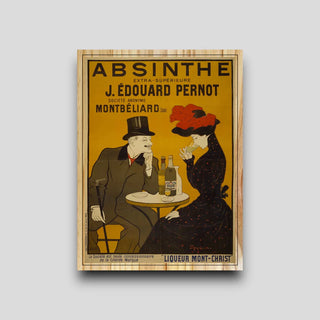Choosing the perfect print material can be a daunting task, with a wide array of options available to consumers. From classic paper to innovative alternatives, the possibilities are endless. However, one standout choice is gaining traction for its aesthetic appeal, durability, and eco-friendly characteristics: pine.
Today, we will delve into the world of print materials, demystify the options, and reveal why pine has become the gold standard in printing.
What are Print Materials?
Print materials encompass the various substrates used in printing. These substrates can be as varied as paper, cardstock, vinyl, fabric, plastic, or wood, each providing a different aesthetic, texture, and finish. The selection of the right print material can significantly impact the final product's look and feel, durability, and even its environmental impact.
The Environmental Impact of Traditional Print Materials
To fully appreciate the value of pine as a print material, we must first understand the environmental impact of traditional print materials. Paper, a widely used print material, contributes significantly to deforestation. The production process is also water-intensive, using approximately 10 liters of water to produce a single sheet.
Moreover, the process of turning wood into paper often involves bleaching to attain the desired whiteness, releasing harmful chemicals such as chlorine compounds into the environment. These toxic substances can adversely affect wildlife and contaminate water sources. The carbon footprint of producing and transporting paper products further exacerbates the environmental burden of traditional print materials.
The Sustainability of Pine
In contrast, pine as a print material offers a more sustainable alternative. Pine trees grow quickly, making them a renewable resource. They can be harvested with minimal impact on the environment, contributing less to deforestation than slower-growing tree species.
The process of converting pine into a print-ready material involves less water and fewer chemicals, making it a greener choice. Unlike paper production, the transformation of pine wood into a print substrate doesn't require intensive bleaching, thereby reducing the emission of harmful substances.
Furthermore, sourcing pine for print materials can support sustainable forestry practices, promote biodiversity, and help combat climate change by encouraging the growth of these carbon-absorbing trees.
Durability and Aesthetics of Pine
Beyond its environmental advantages, pine also excels in durability and aesthetics. Its natural toughness and resilience to wear make it a sturdy choice for print material, ensuring your prints will stand the test of time.
But durability isn't the only draw. Pine's unique grain and warm hues bring a touch of natural beauty to each print. The grain patterns act as an extra element of design, adding depth and character to the printed artwork. This natural aesthetic is something synthetic materials can't replicate, providing a unique, organic charm to your prints.
Applications of Pine in Printing
The applications of pine in printing are vast and varied. In commercial printing, pine can be used for promotional materials, signage, or custom prints. For artists, pine provides a unique canvas for fine art reproductions, adding a rustic touch that enhances the artwork.
In the world of interior design, pine prints can be used to create stunning wall art or decorative pieces. Even in the world of publishing, pine can be used for cover prints, offering a tactile and visual experience that sets a book apart.

